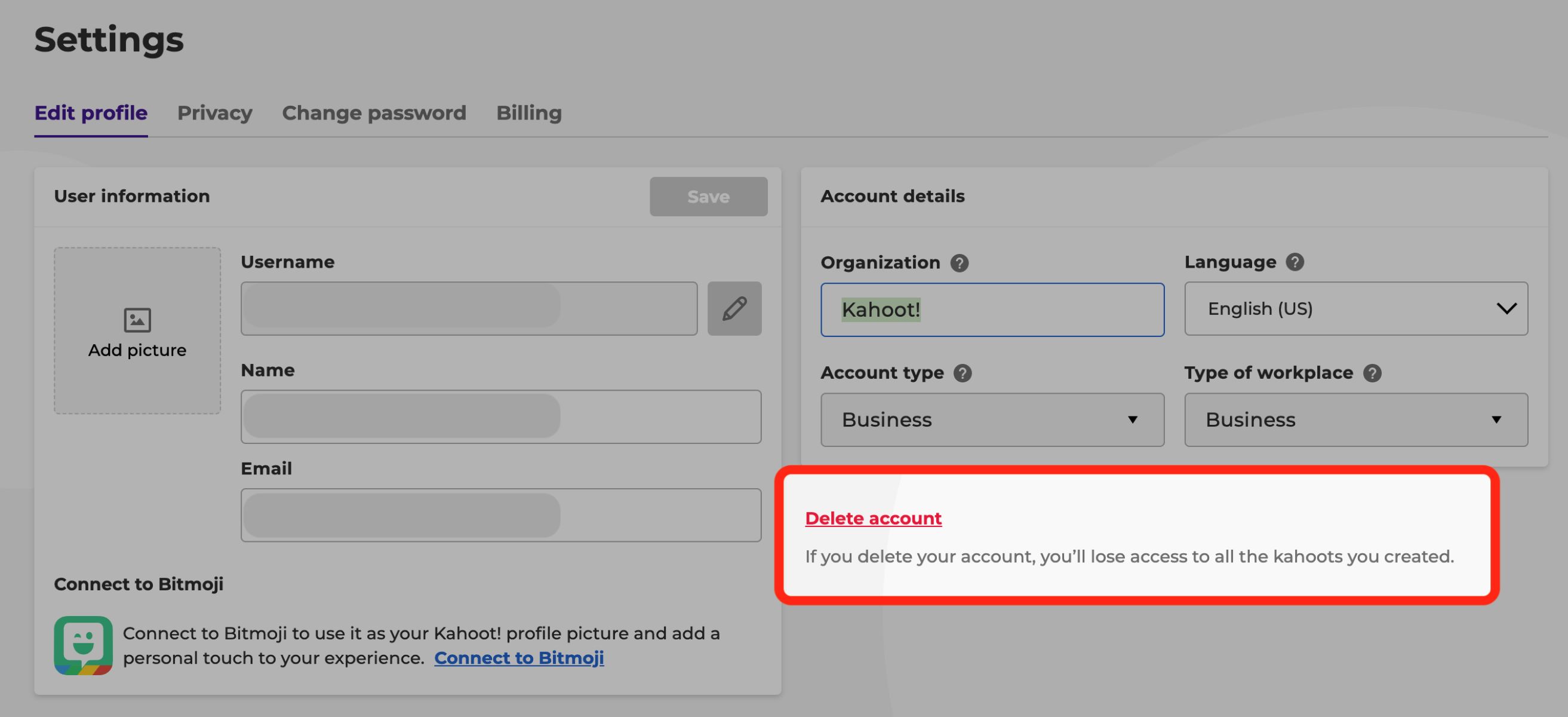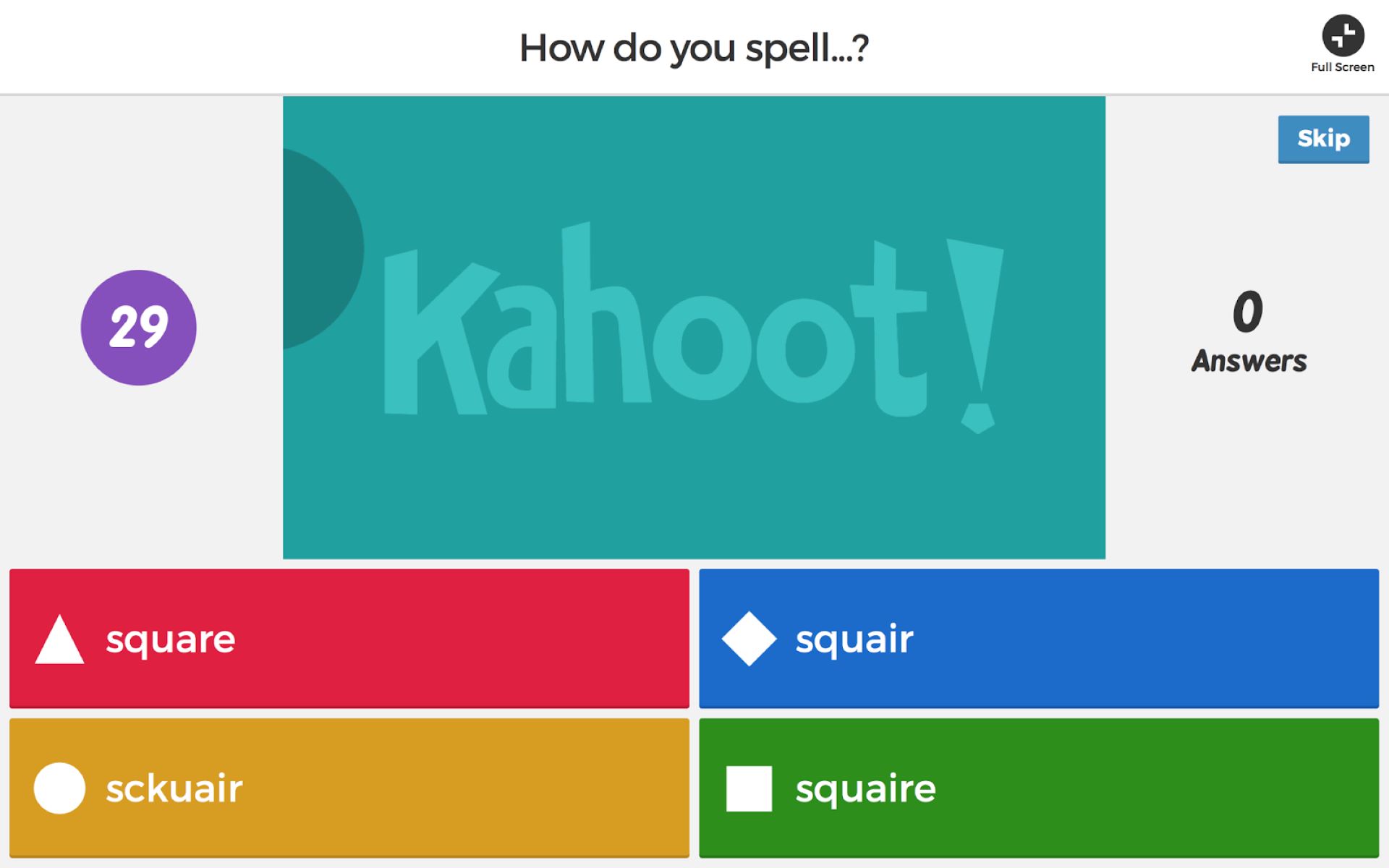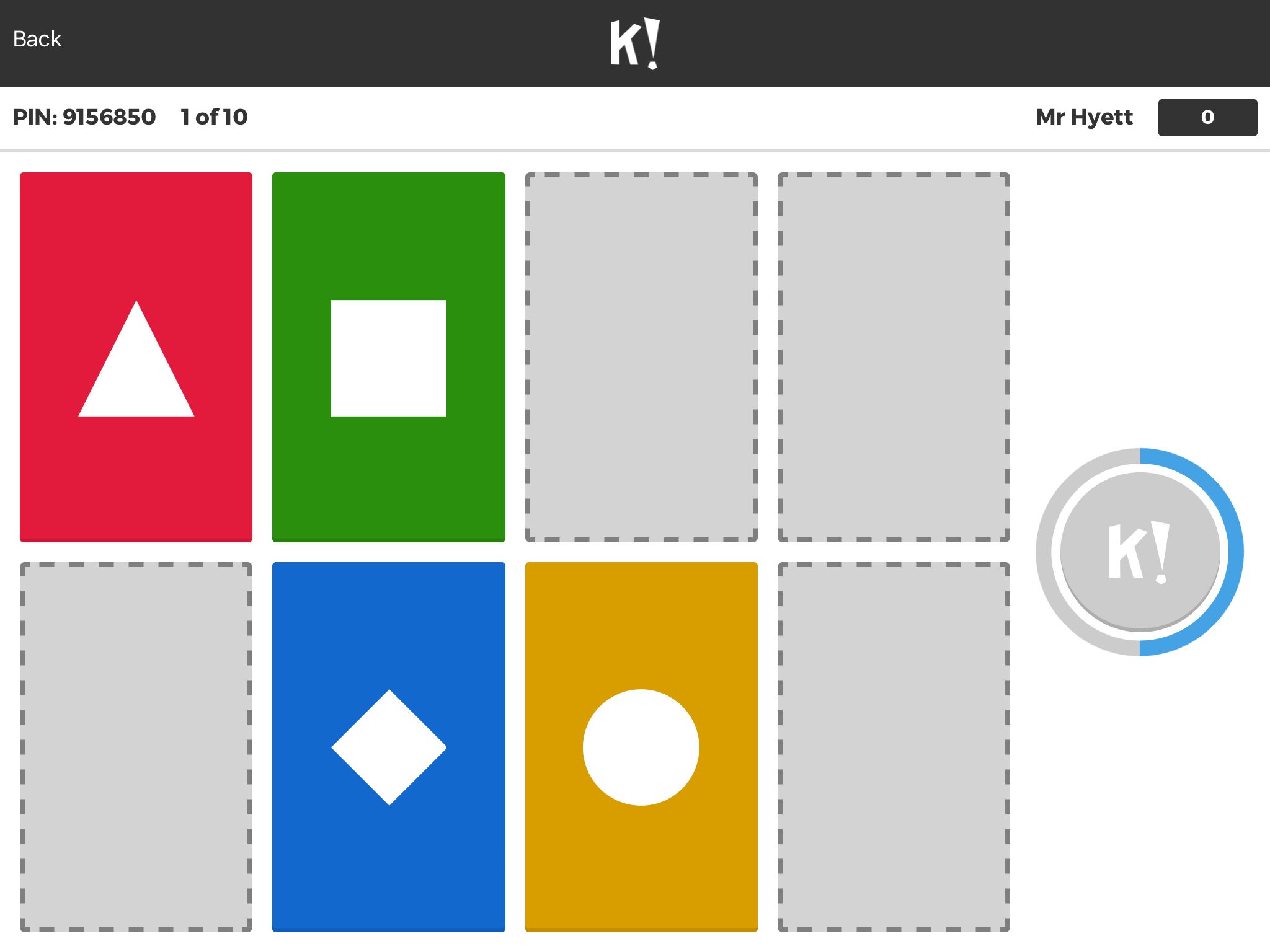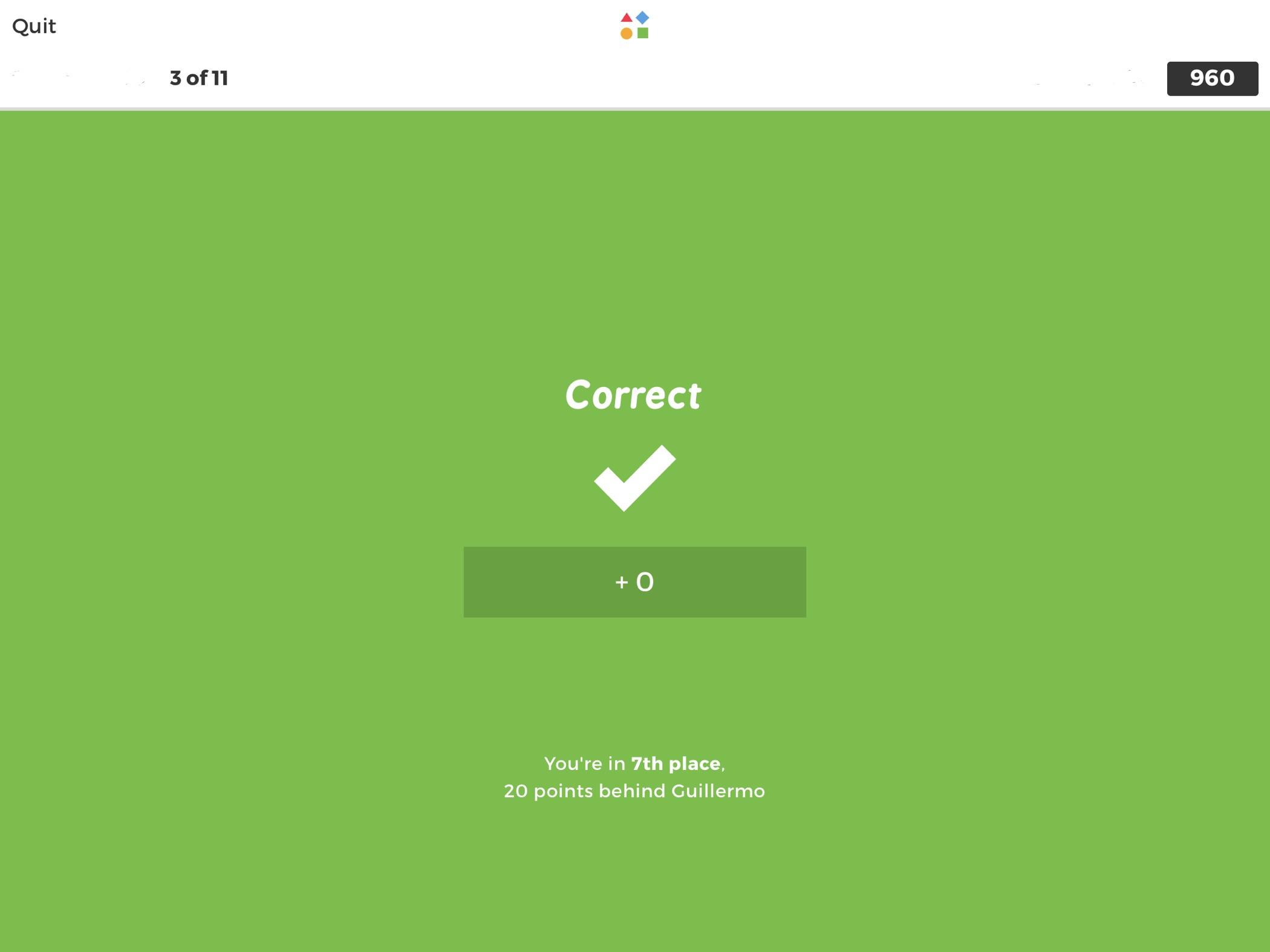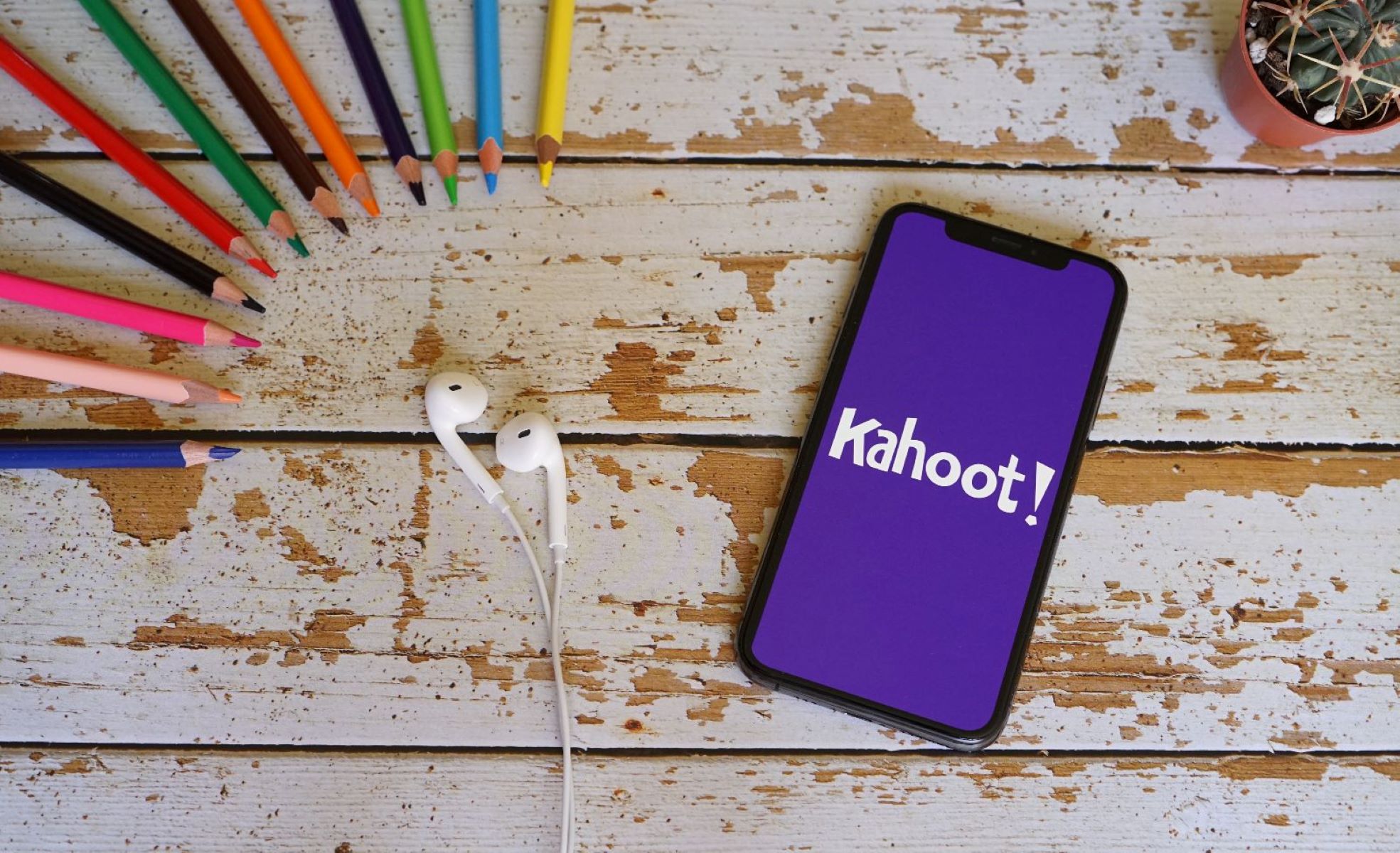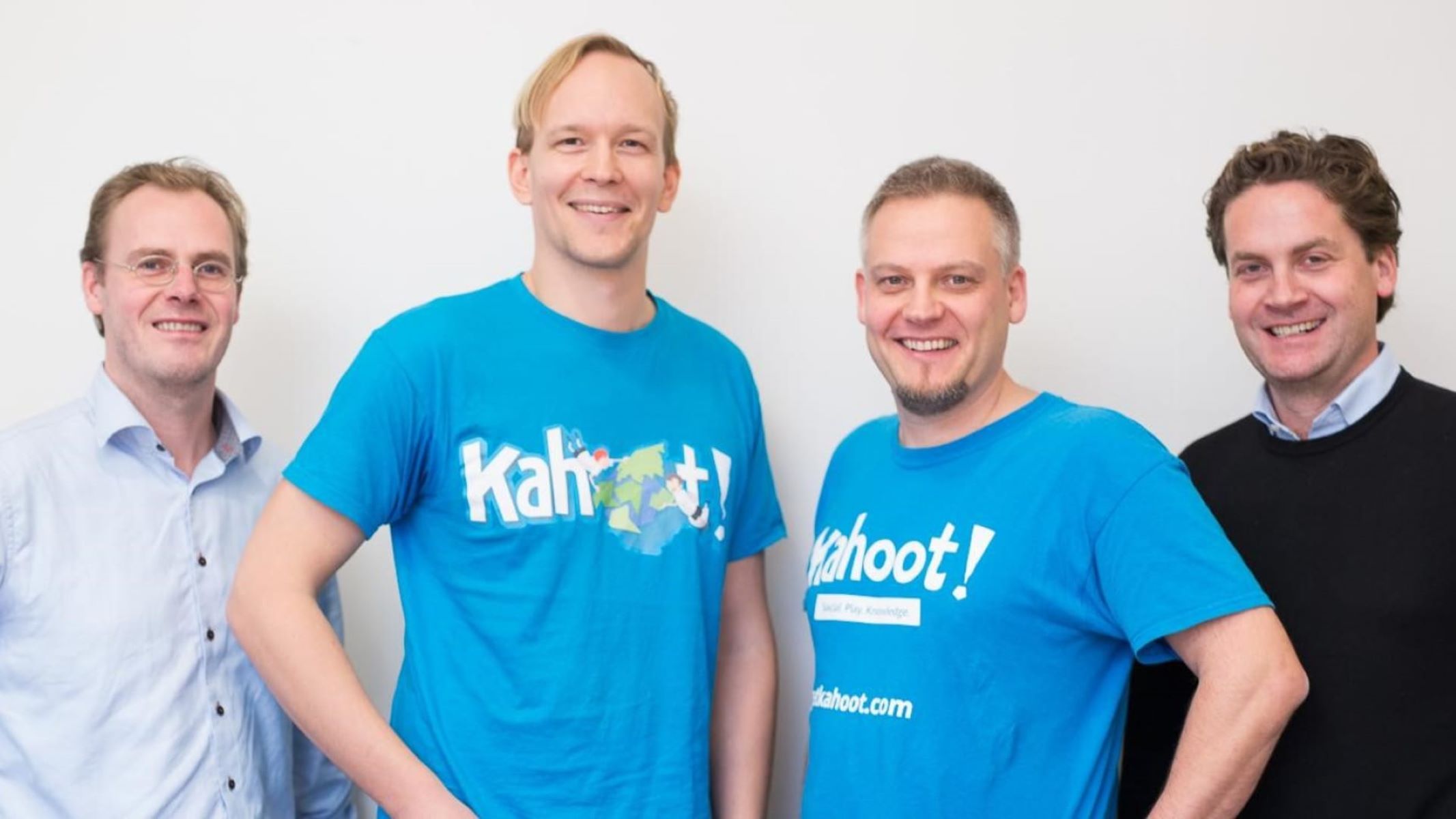Introduction
Welcome to the fascinating world of Kahoot, a quiz-based learning platform that has revolutionized education by making learning engaging and interactive. With its innovative approach to education, Kahoot has captured the attention of educators and students around the globe.
Kahoot was launched in 2013 with the aim of bringing fun into the classroom and transforming traditional teaching methods. It enables teachers to create interactive quizzes, surveys, and discussions that can be accessed by students on their devices. This gamified approach fosters active participation, boosts student engagement, and promotes effective learning.
Through Kahoot, students can not only answer questions but also compete against their peers, earning points and climbing up the leaderboard. The competitive aspect adds an element of excitement and motivation, encouraging students to strive for better performance and retention of knowledge.
The platform’s success can be attributed to its user-friendly interface, accessible across various devices including smartphones, tablets, and computers. Kahoot’s vast library of ready-made quizzes covering diverse subjects, coupled with the option for users to create and share their own, provides educators with a rich resource and the flexibility to tailor quizzes to suit their teaching objectives.
Furthermore, Kahoot allows for remote learning and collaboration, enabling students to participate from anywhere in the world. This feature has become particularly valuable in recent times, with the global shift towards online and hybrid learning models.
Another key aspect of Kahoot’s appeal is its emphasis on inclusivity. The platform offers options for customization, such as allowing users to add images and videos to questions, which caters to different learning styles and enhances the overall learning experience.
In addition to its impact on classrooms, Kahoot has also made waves in corporate training and team-building exercises. Its interactive nature and easy-to-use features have positioned it as a versatile tool for organizations to engage employees and drive knowledge retention.
In this article, we will delve deeper into Kahoot’s journey to success, explore its ownership and investment landscape, introduce its key stakeholders, and discuss the future prospects that lie ahead for this innovative platform.
Kahoot: The Quiz-Based Learning Platform
Kahoot has emerged as a leading quiz-based learning platform that has transformed the way students learn and participate in educational activities. With its gamified approach to teaching, Kahoot has succeeded in making learning fun, engaging, and interactive.
Through Kahoot, teachers can create quizzes, surveys, and discussions to assess and reinforce students’ knowledge. These activities can be customized to align with specific learning objectives and cover a wide range of subjects and topics.
One of the key features of Kahoot is its user-friendly interface, which allows teachers to create interactive quizzes using a combination of multiple-choice questions, polls, and jumble questions. This variety of question formats keeps students actively engaged and encourages critical thinking as they select the correct answers.
Additionally, Kahoot offers a diverse library of ready-made quizzes that cover various subjects, making it easier for teachers to find relevant content and save time on quiz creation. These quizzes can be shared among educators, fostering collaboration and sharing of best practices.
Another aspect that sets Kahoot apart is its competitive element. Students can compete against their classmates or other Kahoot users through live games or challenges. This not only adds an element of excitement but also motivates students to actively participate and strive for better results.
Furthermore, Kahoot has adapted to the changing landscape of education by providing options for remote learning and assessment. With the ability to access Kahoot from any device, students can engage in quizzes and activities regardless of their physical location.
Kahoot’s impact extends beyond the classroom walls, as it has gained popularity among corporate organizations for training and team-building purposes. Its interactive and collaborative features make it an ideal tool for imparting knowledge, facilitating discussions, and boosting team engagement.
Overall, Kahoot has revolutionized the learning experience by combining gamification, interactivity, and accessibility. It has created an environment where students can actively participate, compete, and learn in an engaging manner. With its continued advancements in technology and commitment to education, Kahoot is poised to shape the future of learning.
Kahoot’s Journey to Success
Kahoot’s journey to success has been nothing short of extraordinary. From its humble beginnings in 2013 to becoming a global phenomenon in the education technology sector, Kahoot has experienced rapid growth and widespread adoption by educators and students alike.
The idea for Kahoot was conceived by three Norwegian entrepreneurs: Johan Brand, Jamie Brooker, and Morten Versvik. They recognized the need for a platform that could make learning more engaging and interactive, and thus, Kahoot was born.
After its launch, Kahoot quickly gained traction, primarily through word-of-mouth recommendations from teachers who witnessed its positive impact on student engagement. This organic growth led to an influx of users, and Kahoot soon expanded its reach beyond Norway to the international market.
The platform’s success can be attributed to several key factors. First and foremost, Kahoot tapped into the growing demand for digital educational tools that could transform traditional classroom experiences. By offering an accessible and user-friendly platform, it addressed the need for interactive learning in an increasingly digital world.
Furthermore, Kahoot’s emphasis on gamification and competition resonated with both educators and students. The platform’s vibrant and engaging interface, coupled with the ability to earn points and track progress, made learning fun and motivating. This unique approach sparked enthusiasm among students, leading to heightened participation and improved learning outcomes.
As Kahoot gained popularity, the company continued to innovate and expand its offerings. It introduced features such as Kahoot Challenges, which allowed students to complete quizzes at their own pace, and Kahoot Academy, a hub for educators to access resources and share best practices.
With each new feature and update, Kahoot solidified its position as a leader in the edtech market. It secured partnerships with major educational organizations, further increasing its visibility and reach. Today, Kahoot is used in schools, universities, and corporate training programs in over 200 countries, earning the loyalty and trust of millions of users.
Kahoot’s commitment to continuous improvement has been central to its success. The company actively listens to feedback from educators and students, incorporating their suggestions into product updates and enhancements. This customer-centric approach has allowed Kahoot to stay ahead of the curve and meet the evolving needs of the education community.
Looking ahead, Kahoot shows no signs of slowing down. With a strong foundation and a dedicated team, the company is well-positioned to continue its growth trajectory and make an even greater impact on the future of education.
The Founders of Kahoot
Kahoot owes its success to the vision and determination of its founders: Johan Brand, Jamie Brooker, and Morten Versvik. These three Norwegian entrepreneurs came together with a shared goal of transforming education through interactive and gamified learning experiences.
Johan Brand, a former educator and entrepreneur, played a pivotal role in the inception of Kahoot. His background in education provided valuable insights into the challenges faced by teachers and students, and he envisioned a solution that could revolutionize the classroom experience.
Jamie Brooker, with his expertise in design and user experience, contributed to turning Johan’s vision into a tangible and engaging platform. Jamie’s ability to create visually appealing and intuitive interfaces played a crucial role in making Kahoot a user-friendly and accessible tool for educators and students.
Morten Versvik, a seasoned technologist and software engineer, brought his technical expertise to the forefront, ensuring that Kahoot could deliver a seamless and reliable user experience. Morten’s passion for technology and innovation enabled the team to overcome technical challenges and create a robust platform that could scale to meet the needs of its growing user base.
Together, the founders combined their diverse skill sets and shared a collective vision of transforming education through technology. Their collaborative efforts and unwavering determination led to the creation of Kahoot, positioning it as a global leader in the edtech industry.
Since the launch of Kahoot, the founders have remained actively involved in shaping the company’s direction and fostering its growth. They have embraced feedback from educators and students, continuously refining and improving the platform to better serve the needs of the education community.
The founders’ commitment to innovation and user-centered design has been instrumental in Kahoot’s success. They have nurtured a culture of creativity and collaboration, fueling the company’s ability to stay ahead of the curve and deliver cutting-edge solutions to educators and learners.
Despite the rapid growth and international recognition, the founders have remained grounded and true to their mission of making learning fun and engaging for all. Their passion for education continues to drive their dedication to improving the platform and expanding its reach.
In summary, the founders of Kahoot, Johan Brand, Jamie Brooker, and Morten Versvik, are the driving forces behind the creation and success of this game-changing learning platform. Their combined expertise, shared vision, and unwavering commitment have played a significant role in reshaping the world of education and transforming the way students learn.
Ownership and Investment: Understanding Kahoot’s Stakeholders
As Kahoot grew in popularity and gained international recognition, its ownership and investment landscape evolved, with various stakeholders playing key roles in the company’s development.
One of the early investors in Kahoot was Northzone, a venture capital firm based in Europe. Their belief in the potential of the platform led to a significant investment in 2014, providing the necessary funds for Kahoot’s expansion and further development.
Over time, Kahoot attracted additional investors, including Microsoft Ventures, Datum AS, and Creandum. These investments not only provided financial support but also brought strategic partnerships and expertise to the table, helping Kahoot reach new heights.
Another important stakeholder in Kahoot’s journey is the education community. Teachers and students have embraced the platform, becoming active users and advocates for the company. Their feedback and suggestions have been invaluable in shaping the direction of Kahoot and making it more relevant and effective in educational settings.
Kahoot’s commitment to accessibility and inclusivity is evident in its partnerships with educational organizations. The company has joined forces with major publishers and content providers, such as Disney and National Geographic, to offer a vast array of educational content for teachers to incorporate into their Kahoot activities.
In 2019, Kahoot went public on the Oslo Stock Exchange, further diversifying its ownership base. This initial public offering (IPO) allowed investors and individuals to become shareholders in the company, contributing to its continued growth and financial stability.
With its IPO, Kahoot attracted even more attention from the investment community. Several institutional investors, including Fidelity Management & Research Company, BlackRock, and Vanguard Group, have recognized the potential of Kahoot and made substantial investments in the company.
It is important to note that while Kahoot seeks external investments and partnerships, it remains focused on its mission to provide a quality educational experience. The company prioritizes maintaining a balance between revenue generation and delivering value to educators and students.
Kahoot’s stakeholders, including investors, educators, students, and other strategic partners, play crucial roles in contributing to and shaping the company’s success. The collaborative efforts and support of these stakeholders have enabled Kahoot to expand its offering, explore new markets, and continue to innovate in the field of educational technology.
Understanding Kahoot’s stakeholders and their contributions is essential in comprehending the dynamic environment in which the company operates. Their involvement and investment further reinforce Kahoot’s commitment to transforming education through technology.
Shifts in Ownership: The Current Majority Owner of Kahoot
Since its inception, Kahoot has gone through several shifts in ownership as it attracted investments and expanded its operations. These changes have shaped the company’s ownership structure, with one entity emerging as the current majority owner.
Currently, the majority owner of Kahoot is a Norwegian investment company known as Verdane. Verdane first became involved with Kahoot in 2017 when it acquired a significant stake in the company. Over time, Verdane increased its ownership and now holds a majority share.
Verdane is known for its expertise in supporting technology companies and has a track record of fueling their growth. As the majority owner of Kahoot, Verdane has played a crucial role in guiding the company’s strategic direction and ensuring its long-term success.
This shift in ownership has brought stability and resources to Kahoot, allowing the company to further expand its reach and impact. Verdane’s involvement has provided financial support, industry knowledge, and a network of connections, enabling Kahoot to scale its operations and explore new opportunities.
Despite being the majority owner, Verdane is not involved in Kahoot’s day-to-day operations. The company’s management team, led by CEO Eilert Hanoa, remains responsible for executing the company’s vision and driving its growth.
Kahoot’s partnership with Verdane exemplifies the company’s commitment to attracting strategic investors who can bring valuable expertise and resources to the table. The collaboration between Kahoot and Verdane highlights the mutual interest in harnessing the potential of educational technology and driving innovation in the field of education.
It is important to note that while Verdane holds a majority stake, Kahoot remains a publicly traded company with a diverse shareholder base. This allows for increased transparency and accountability as the company continues to grow and evolve.
The presence of Verdane as the current majority owner underscores the confidence in Kahoot’s potential and validates its position as a leader in the educational technology sector. With strong ownership support and a dedicated management team, Kahoot is well-positioned to continue its upward trajectory and make a lasting impact in the world of education.
Kahoot’s Board of Directors and Leadership Team
Behind the success of Kahoot lies a dedicated and experienced board of directors and leadership team, working in tandem to guide the company’s strategy and drive its growth in the educational technology market.
The board of directors of Kahoot consists of individuals with a diverse range of expertise and backgrounds, bringing a wealth of knowledge to the company. The board members provide valuable guidance and oversight, ensuring the company operates in the best interest of its stakeholders.
Leading the board is its Chairman, Åsmund Furuseth, who brings extensive experience in technology investments and strategy. His leadership and strategic vision have been instrumental in shaping Kahoot’s path towards innovation and sustained growth.
Working closely with the board is the leadership team, spearheaded by the CEO, Eilert Hanoa. With a background in technology and extensive experience in the software industry, Hanoa has played a pivotal role in expanding Kahoot’s global reach and diversifying its offerings.
Under Hanoa’s leadership, Kahoot has experienced significant growth, scaling its operations and broadening its impact in the education sector. Hanoa’s commitment to innovation and his ability to mobilize the team have been critical in positioning Kahoot as a leader in the educational technology landscape.
Assisting the CEO in the day-to-day operations and strategic decision-making is an experienced and dynamic leadership team. This team comprises individuals with expertise in product development, marketing, finance, and operations, among other disciplines.
Together, the leadership team works tirelessly to ensure Kahoot remains at the forefront of technology-driven learning solutions. Their collaborative efforts drive the continuous improvement and expansion of the platform, enabling educators and learners to maximize the benefits of interactive and gamified education.
Kahoot’s commitment to diversity and inclusivity is reflected in its leadership team and board of directors. The company recognizes the importance of diverse perspectives and experiences in driving innovation and meeting the needs of its global user base.
Overall, Kahoot’s board of directors and leadership team play a critical role in shaping the company’s strategic direction and operational execution. Their collective expertise, vision, and passion for education technology have been instrumental in Kahoot’s success and continued growth.
As Kahoot continues to evolve, its board and leadership team remain committed to driving innovation, expanding partnerships, and delivering exceptional educational experiences to learners around the world.
Future Prospects: What Lies Ahead for Kahoot
Kahoot’s success and widespread adoption have set the stage for an exciting future, as the company continues to innovate and shape the landscape of educational technology. Several key factors point towards a promising outlook for Kahoot and its potential for further growth and impact in the coming years.
One of the main drivers of Kahoot’s future prospects is its commitment to continuous improvement and innovation. The company maintains a strong focus on listening to user feedback and integrating new features and functionalities into its platform. This dedication to enhancing the user experience ensures that Kahoot remains relevant and valuable to educators and students alike.
Kahoot has also shown its adaptability by expanding its offerings beyond the traditional classroom setting. With the rise of remote and hybrid learning models, the platform has evolved to meet the changing needs of educators and the demands of a digitally connected world. This flexibility positions Kahoot to thrive as education continues to embrace technology-driven solutions.
Furthermore, Kahoot’s strategic partnerships and collaborations with leading publishers and content creators have significantly expanded its library of educational resources. By offering a wide range of high-quality, curriculum-aligned content, Kahoot provides educators with a comprehensive tool to enhance their teaching and engage students effectively across various subjects and disciplines.
The global reach of Kahoot is another factor that bodes well for its future prospects. With a presence in over 200 countries and a user base that spans the globe, Kahoot has established itself as a globally recognized brand in educational technology. This international footprint opens up opportunities for further expansion into new markets and the potential for increased partnerships with educational institutions globally.
The ongoing advancements in technology and the growing demand for digital learning solutions also work in Kahoot’s favor. As technology continues to evolve, Kahoot is well-positioned to leverage emerging trends and incorporate cutting-edge features into its platform, further enhancing the user experience and keeping pace with the rapidly changing educational landscape.
Moreover, Kahoot’s commitment to accessibility and inclusivity aligns with the demand for personalized and inclusive education. By continuing to cater to diverse learning styles and offering features that accommodate different abilities, Kahoot ensures that all students can actively participate and benefit from its interactive learning experiences.
In summary, Kahoot’s future prospects appear bright as the company continues to innovate, adapt, and expand its reach. With a focus on user feedback, strategic partnerships, global expansion, emerging technologies, and inclusivity, Kahoot is well-positioned to remain at the forefront of educational technology and make a lasting impact on the future of learning.
Conclusion
Kahoot has emerged as a leading quiz-based learning platform that has revolutionized education by making learning engaging, interactive, and fun. With its user-friendly interface, diverse range of features, and commitment to innovation, Kahoot has gained widespread popularity among educators and students worldwide.
The platform’s success can be attributed to its gamified approach, which motivates students to actively participate, compete, and improve their learning outcomes. Through partnerships with educational organizations and publishers, Kahoot offers a vast library of ready-made quizzes and resources, enabling educators to create interactive and customized learning experiences.
Kahoot’s journey to success has been fueled by the dedication and expertise of its founders, the support of strategic investors, and the active involvement of its stakeholders. Shifts in ownership, including the current majority owner, Verdane, have brought stability and resources, contributing to Kahoot’s continued growth and development.
Kahoot’s board of directors and leadership team, led by CEO Eilert Hanoa, have played a vital role in shaping the company’s strategic direction and executing its vision. Their commitment to innovation, inclusivity, and user-centered design has propelled Kahoot to the forefront of educational technology.
Looking ahead, Kahoot’s future prospects remain promising. The company’s dedication to continuous improvement, adaptability to changing educational landscapes, global reach, and partnerships position it for further expansion and impact. As technology advances and the demand for digital learning solutions grows, Kahoot is well-positioned to lead the way in transforming education and unlocking the potential of interactive and gamified learning experiences.
In conclusion, Kahoot’s innovative approach to education, combined with its commitment to inclusivity and continuous improvement, has made it a trailblazer in the educational technology domain. With its ever-expanding user base, strategic partnerships, and visionary leadership, Kahoot’s impact on the future of learning is poised to be significant and enduring.









